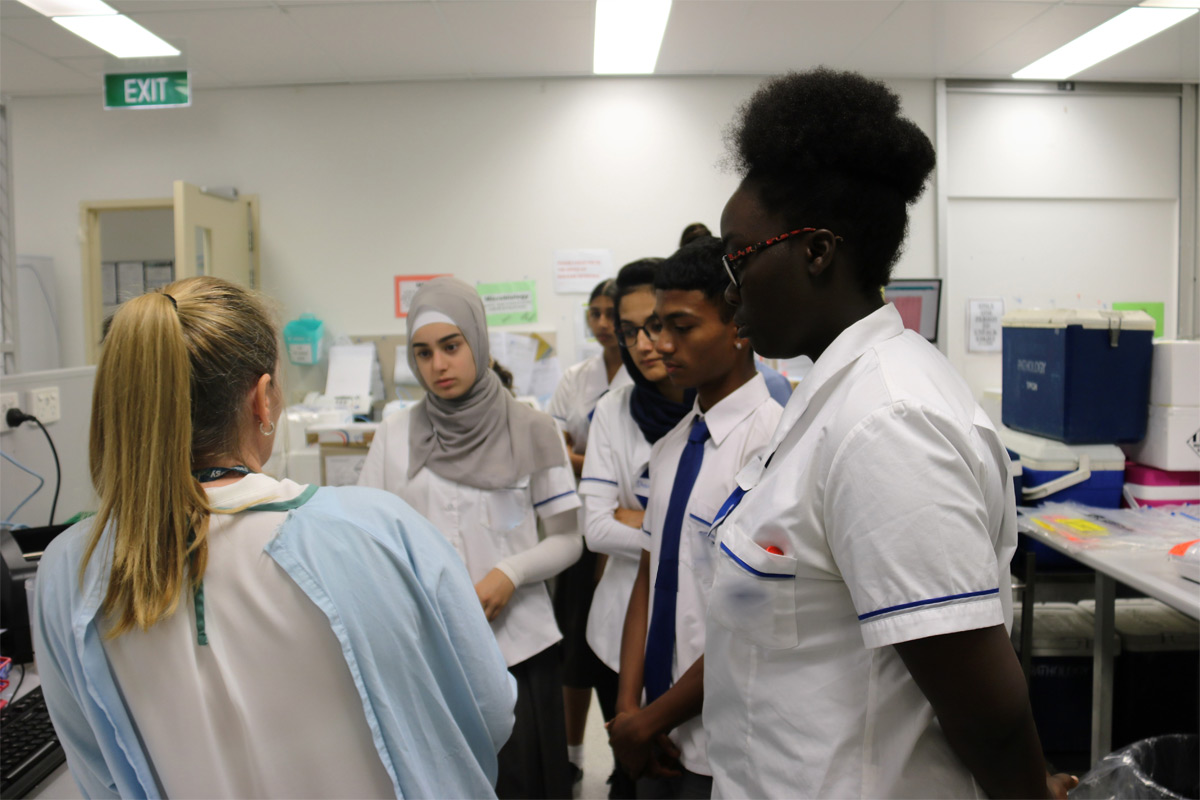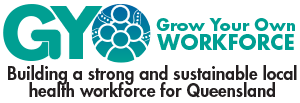Queensland Health
- Outside-in
- Health Sector
- South East Queensland

The Challenge
To address the need for improved opportunities for youth, specifically in the metropolitan area of Logan in Southeast Queensland, where unemployment rates for youth have risen by 4.7% since 2017 to a high of 17.3% (as at June 2019). Queensland Health developed a school-based traineeship program for Logan area high schools to provide an avenue to non-clinical career opportunities and alternative school to employment pathways into the health sector for year 11 and 12 students.
The Solution
- The department engaged a reputable Group Training Organisation (GTO) that specialised in school-based traineeships to recruit and manage the program.
- Schools in the Logan area were engaged to participate in a fully funded school-based traineeship program.
- The traineeship program was designed to offer students in year 11 and 12 the opportunity to complete a Certificate III level qualification and undertake paid work placement (1 day a week) over 12 months, within corporate areas of Queensland Health, whilst continuing their school education.
- Information about the traineeship program was communicated to students through school guidance officers.
- Students who expressed an interest in the program were invited to apply for traineeships roles in three non-clinical work streams: Information Technology, Pathology and business service areas of Human Resources, Payroll and Finance.
Implementation
- Successful implementation of the traineeship program required:
- clear definition of program outcomes;
- a defined, but flexible approach to how this would be achieved;
- research and identification of viable career pathways within the organisation;
- mapping the selected careers to certificate level qualifications;
- identification of a suitable and credible group training organisation to assist with employment, mentoring and holistic support required for school-based trainees;
- comprehensive briefing and support to the managers and supervisors responsible for the trainees whilst in the workplace; and
- a commitment to overcoming obstacles to ensure the program’s success.
- The program required a series of approval processes including: project planning; financial; and procurement. It was crucial to identify all necessary approvals early on and consider them in developing the project timeframes. This early planning contributed to the project meeting internal deadlines and ensured that the traineeship commencements dates and forecasted completions were aligned to the school calendar and student educational commitments.
- The program required establishment of new relationships with internal and external stakeholders. This included partnerships with industry experts, GTO, registered training organisations (RTOs), other government agencies and the affiliated state high schools.
- The timeline for development of the program was four months of planning and set up, two months for recruitment and another month of onboarding activities.
- The school-based traineeship program commenced in April 2019. Trainees will complete 375 hours of paid work experience and graduate with a certificate III level qualification in April 2020.
Organisational strategies
- Developing a grow your own workforce approach for in demand entry level roles (an outside-in approach).
- Promoting non-clinical healthcare roles and demonstrating how they contribute to supporting healthcare delivery.
- Increasing diversity and inclusion within the health sector workforce
Partnership strategies
- Working with the schools to develop communication and recruitment strategies that students would be receptive to was important.
- A good working relationship with the school’s Vocational Education and Training coordinators and career guidance counsellors is important in the development of a VET program within high schools to achieve a well-received school-based Traineeship program.
- Project team members need to communicate regularly with the GTO who employs and mentors the school-based trainees. This will ensure that organisations receive regular updates on the trainees’ progress and their experience within the workplace.
- Regular communication helps to ensure that any issues or challenges experienced by the trainee or the manager/supervisor are addressed, and the necessary intervention strategies are actioned in a timely manner.
Program design strategies
- Minimal use of internal resources to fund and manage the program.
- Use of highly experienced external providers to deliver the program and provide mentoring support to the participating students.
- Use the program as a case study on how to implement cost effective, grow your own workforce strategies to increase the attraction of youth into non-clinical health care jobs.
Results
- 14 traineeships positions offered and commenced across three work streams.
- Increased confidence and career direction of school students.
- Establishment of articulated career pathway and employment opportunities for students once they have completed year 12.
- Trainees are developing real work skills, along with attaining a VET qualification.
Lessons Learned
- Start your stakeholder consultations well in advance of program commencement.
- Ensure all your internal stakeholders are adequately prepared for program commencement.
- Plan for set-backs and have a backup plan to manage your risks.
- Ensure that managers, supervisors and business areas have a clear understanding of traineeships to manage expectations – for most this is their first paid job!
- Have a clear intent of your program outcomes, to avoid confusion or miscommunication between your stakeholders.
REQUIREMENTS FOR
REPLICATION
Do you…
- have internal and external partners that have a thorough understanding of the program’s objectives and who support the intended outcomes of the program?
- have identified entry pathways and entry level roles that you consistently recruit for or are in demand?
- have workforce plans in place to identify future roles and skills, as well as emerging roles?
- have a planned approach to the recruitment, onboarding and training of your trainees?
- have an approved budget to fund the program for 12 months or beyond?
Can you…
- adequately support the program management internally?
- sustain appropriate levels of financial and holistic support mechanism for your participating trainees?
- clearly articulate the non-clinical and clinical career pathways on offer to school students so they can make informed choices?
- offer trainees the opportunity to secure gainful employment or alternative options to advance their career opportunities?
CONSIDERATIONS FOR PROGRAM SCALING
Do you have…
- Internal resources that can be dedicated to supporting and monitoring the program and the trainees?
- Clearly defined roles and responsibilities of all program key stakeholders?
- A communications plan that promotes and highlights the benefits and success of your program?
- Defined key program milestones and an agreed reporting mechanism on the program’s progress?
- Commitment from your participating business areas to support and encourage the development of the trainees in the workplace, and to provide them with opportunities to align their study with practical work-related tasks and activities?
POTENTIAL RISKS
What if…
- The program is not funded to run again, do you have a mitigation strategy in place to continue to develop your grow your own initiative?
- Some of your trainees choose to drop out during the program, will you replace them? If so how?
Participants’ personal stories
Read participants’ personal stories and journey through this program…
